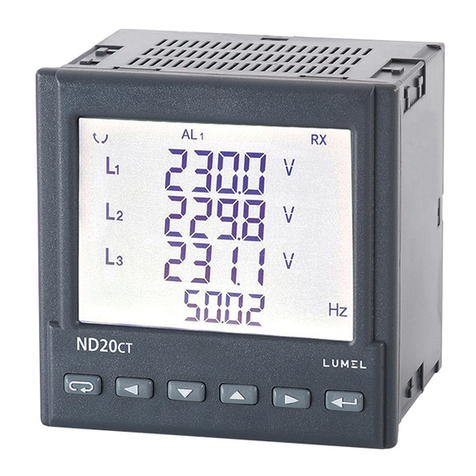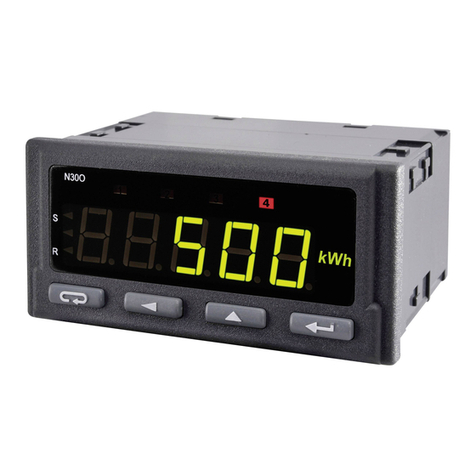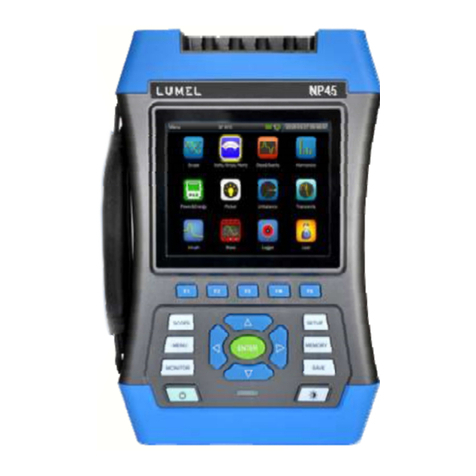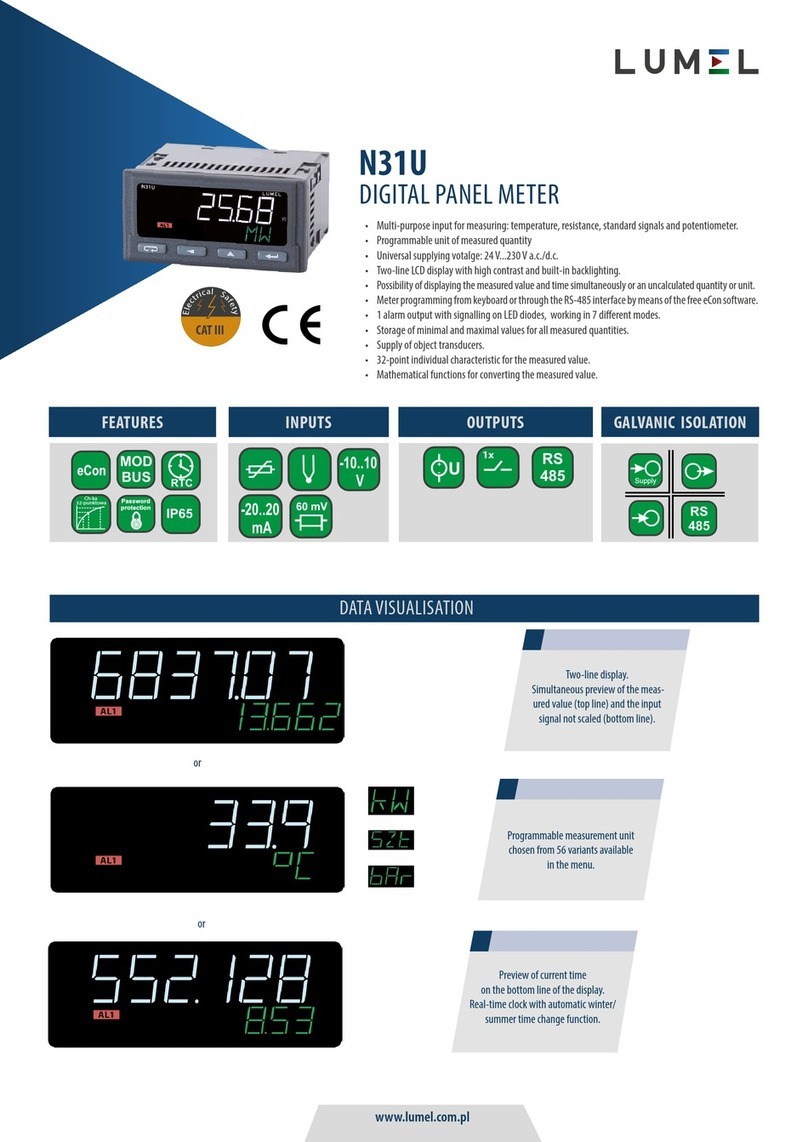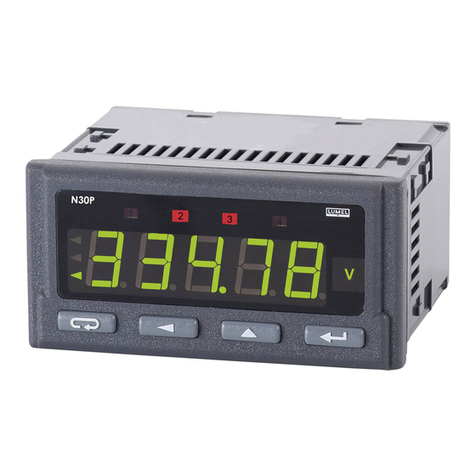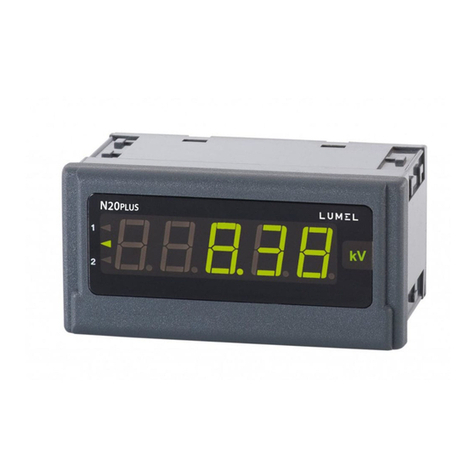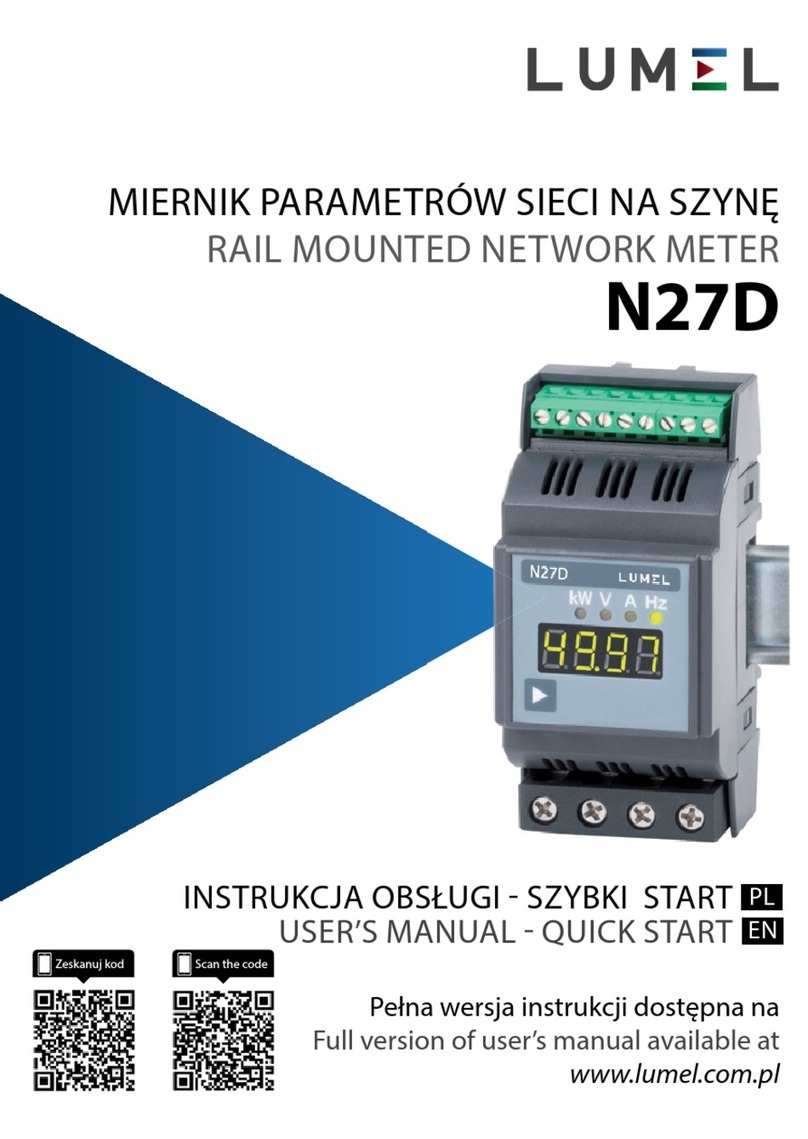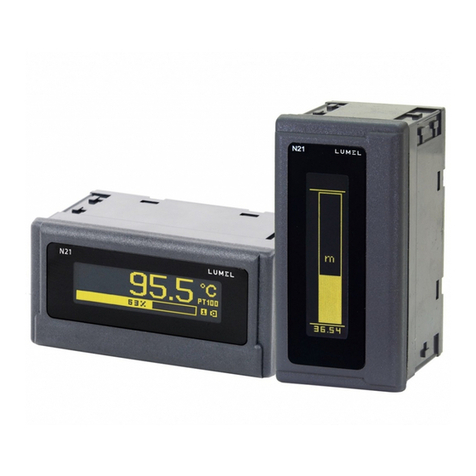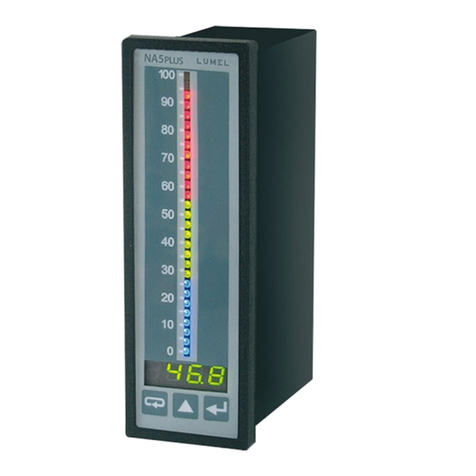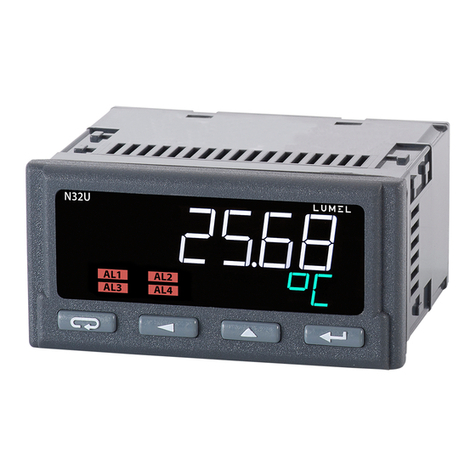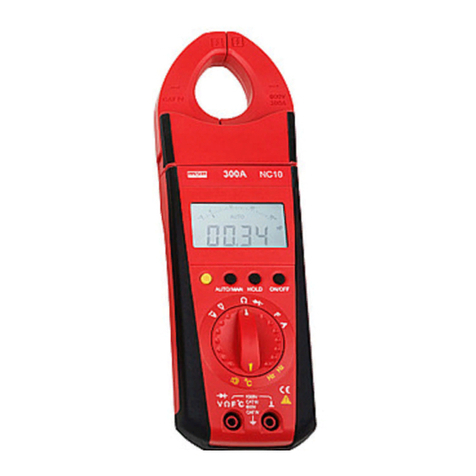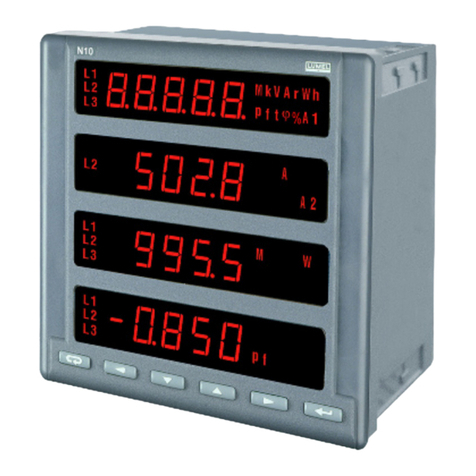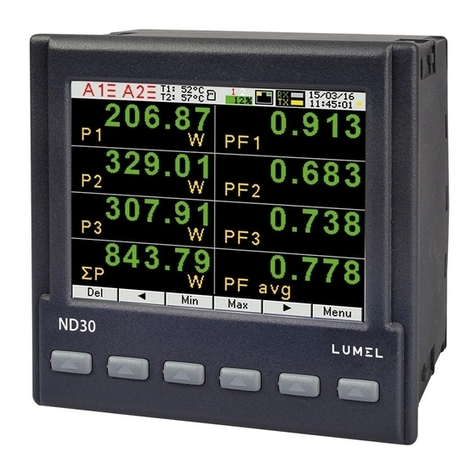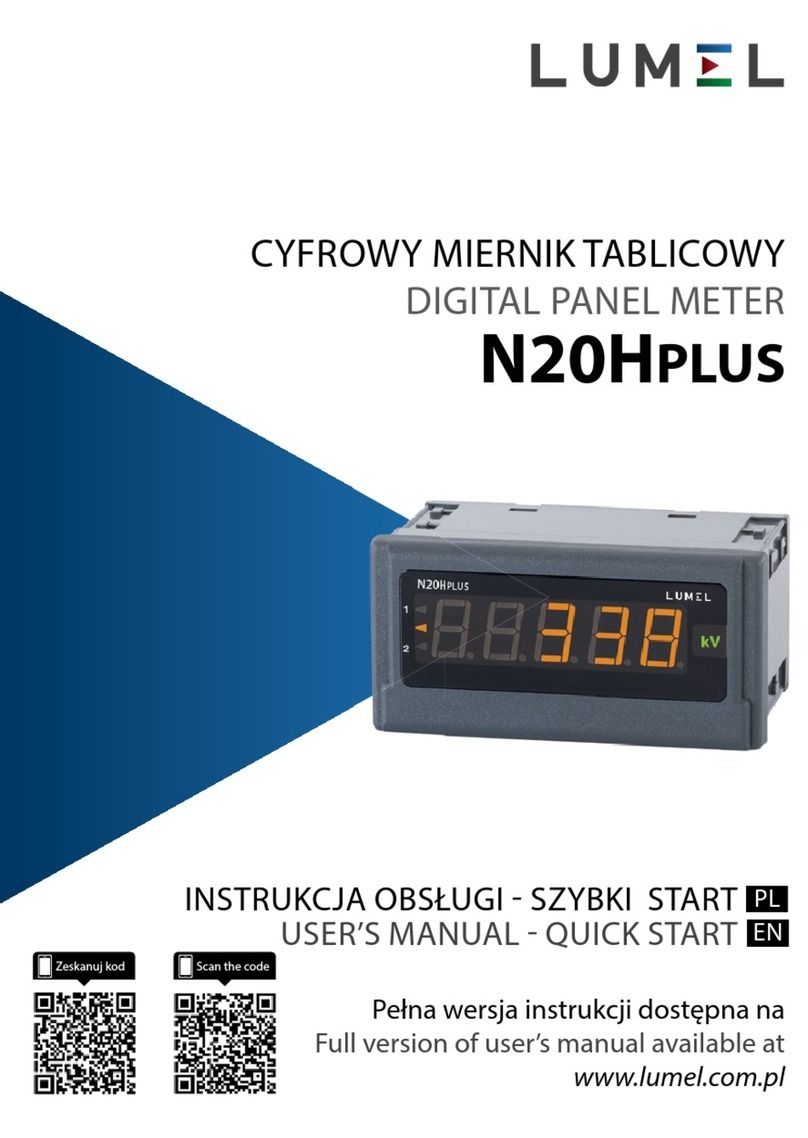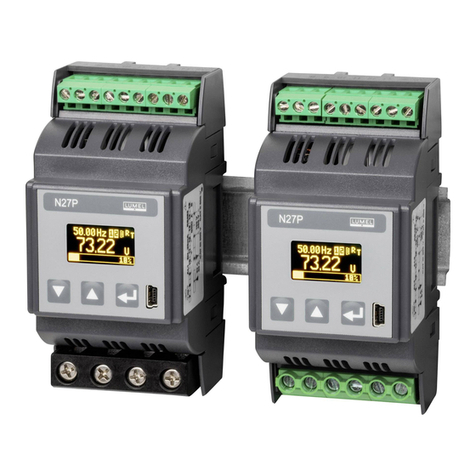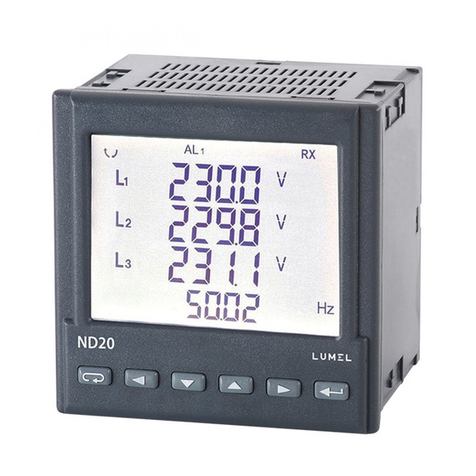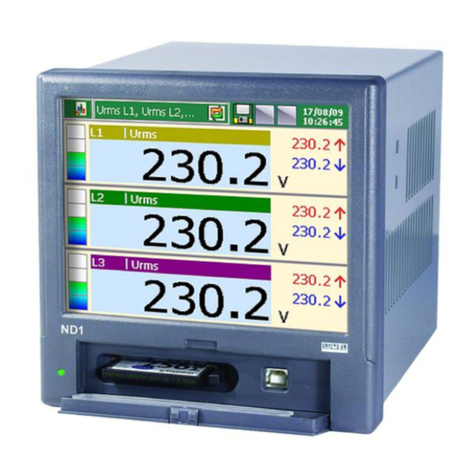
10
pl
Wyjścia przekaźnikowe: - przekaźniki, styki beznapięciowe
zwierne, obciążalność 250 V~/0,5A~
- przekaźniki, styki beznapięciowe przełączane obciążalność 250 V~/0,5A~
(opcja)
Wyjścia analogowe (opcja): - programowalne prądowe 0/4...20 mA
Rezystancja obciążenia 500 W
- programowalne napięciowe 0..10 , Rezystancja obciążenia ³ 500 W
Wyjście zasilania pomocniczego: 24 V d.c./30 mA
Wyjście alarmowe OC (opcja): Wyjście typu OC pasywne
npn. 30 V d.c./30 mA.
Interfejs szeregowy: S-485 (opcja) Protokół transmisji: MODBUS RTU
Błąd wyjścia analogowego: 0,2% zakresu
Stopień ochrony zapewniany przez obudowę:
od strony czołowej IP65; od strony zacisków IP10
Masa: < 0,2 kg Wymiary: 96 ´ 48 ´ 93 mm
Warunki odniesienia i znamionowe warunki użytkowania:
- napięcie zasilania: 85..253 V d.c./a.c. 40..400 Hz lub
20..40 V a.c. (40..400 Hz), 20...60 V d.c.
- temperatura otoczenia: -25...23...+55oC
- temperatura magazynowania: -30...+70oC
- wilgotność: 25...95% (niedopuszczalne skroplenia)
- pozycja pracy: dowolna
- pobór mocy < 6 VA
Normy spełniane przez miernik
Kompatybilność elektromagnetyczna:
l Odporność na zakłócenia wg PN-EN 61000-6-2
l Emisja zakłóceń wg PN-EN 61000-6-4
Wymagania bezpieczeństwa:
według normy PN-EN61010-1
l Izolacja między obwodami: podstawowa,
l kategoria instalacji: III,
l stopień zanieczyszczenia: 2,
Parametry wejść:
- rezystancja wejścia napięciowego [V]: > 1 M W
- rezystancja wejścia prądowego [mA]: 12 ±1 W%
- natężenie prądu płynącego przez rezystor termometryczny 270 ± 10 uA
- rezystancja przewodów łączących rezystor termometryczny z przetwornikiem: <10 W












